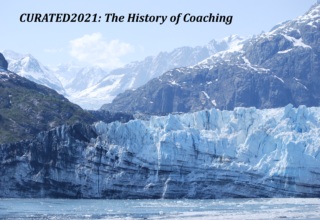
ASSUMPTIONS ABOUT LEARNING
Through their working relationship, Natalie and John have had to address (usually in an indirect manner) yet another level of coaching strategies. They have made tacit decisions about not only the approach to be taken in framing the challenges being faced by John, but also the specific strategies to be used in helping John confront these challenges. These decisions, in turn, are based at least in part on a set of assumptions about how John might best learn about and adopt alternative ways of reasoning, evaluating and behaving in this organization. These assumptions about learning are, in turn, influenced by the alternative perspectives already identified (personal vs. organizational, neutral vs. normative, individual vs. systemic, and head vs. heart).
There is a long history of educational and training initiatives that undergird much of contemporary professional coaching – and Natalie and John should take into consideration the assumptions about learning that are fundamental to these initiatives. Much of the field of professional coaching (particularly organization based coaching) is closely linked to the field of management and leadership development. Not only do many of the men and women being coached in organizations come from middle and upper levels of management and define themselves (or are defined by others) as “leaders.” There also is a widely held belief (and some informal evidence) indicating that leadership developmental programs are enhanced when coupled with coaching (Bergquist, 2004). The learning that occurs in the development programs is more likely to be retained and more likely to be applied when a program participant is coached during the program (if sessions are distributed over time) or following the program (if sessions are offered in an intensive format).
It is assumed not only that management and leadership can be taught, but also that certain common principles and strategies can be identified and applied in many different organizational settings. While there is good reason to believe that management and leadership are context-sensitive and while there is wide dispute about the nature and dynamics of effective management and leadership, the assumption is widely held that developmental programs can be effective – and organizational coaching programs often thrive in settings where this assumption flourishes and where ongoing professional development is alive and well.
One of the foundations of this assumption about professional development was challenged many years ago by Kurt Lewin (who I have already identified as one of the sources of inspiration for many organizational coaches). Lewin and his colleagues (Lippitt, Watson & Westley, I958) proposed that significant learning and development only occurs after a person has been “unfrozen” – when their sense of self and their rational frame of reference for the world has been challenged. A follower of Lewin and his student, Leon Festinger (1957), identified this as “cognitive dissonance”. If Lewin is accurate, then management. and leadership development programs should be preceded by 01 initiated with some event that unfreezes program participants. In recent years, we see the emergence of 360° feedback systems as just such a tool for unfreezing. Unfortunately, in many instances, this tool for learning is misused, leading not to unfreezing, but rather to reinforced resistance to acquisition of the self-knowledge and skills most needed by the recipient of this feedback. This is a point where organizational coaching comes in – not as a tool for follow-up from developmental programs, but as a tool for follow up from the report back of 360° results. Descriptive instruments, such as the MBTI and DISC, can similarly be used in an effective manner – not as a source of learning, but rather as an unfreezing stimulus for the exploration of self and an incentive for acquisition of new skills.
Download Article 1K Club

















